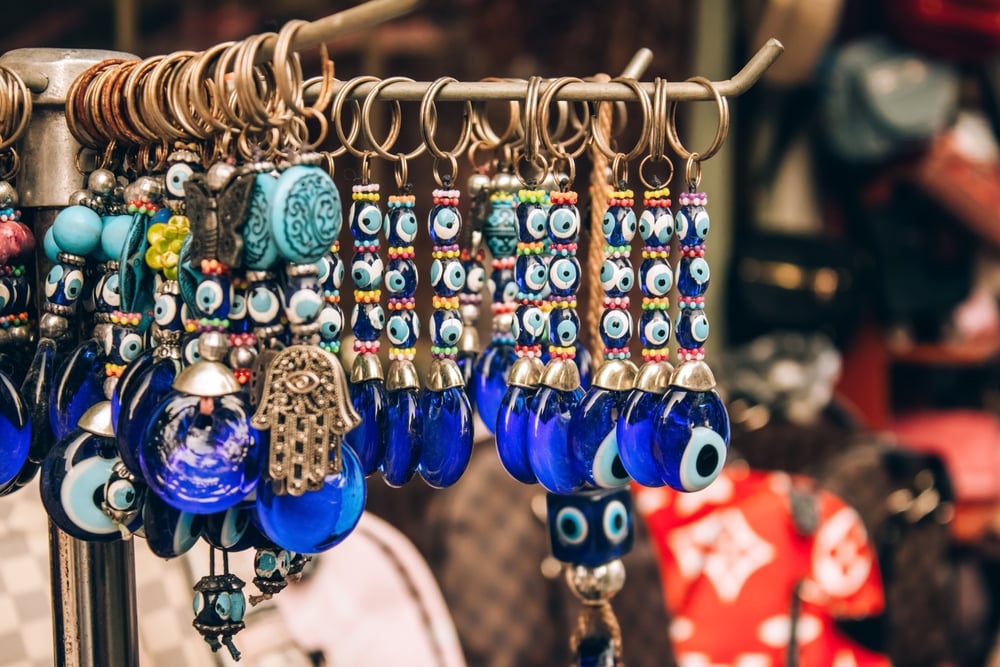Beads have a rich and extensive history, with their use in fashion and cultural expression tracing back to prehistoric times. They are some of the oldest known objects produced by humans, with the earliest known beads dating back to around 100,000 years ago. They were crafted from natural materials such as shells, bones, and stones.
There is archaeological evidence that even in these distant prehistoric times beads were used as a form of currency to trade for other goods and items – it is theorised that human language itself developed to enable us to negotiate these trades more effectively. Beads have been at the centre of human behaviour and culture for millenia, and those first beads set the foundation for the intricate and diverse beadwork that would develop in ancient civilizations and continue to evolve through the ages.
Ancient Civilizations
In ancient Egypt, beads were highly valued not only for their beauty but also for their symbolic significance. Egyptians used beads made of glass, stones, and other materials in their jewelry and garments, often attributing protective and amuletic properties to them. The Indus Valley civilization also possessed advanced bead-making techniques, producing beads from semi-precious stones and incorporating them into elaborate jewelry designs.
Middle Ages and Renaissance
During the Middle Ages in Europe, beads were often associated with religious practices, most notably in the form of rosaries. The Crusades played a pivotal role in the exchange of bead-making techniques between the Middle East and Europe, enriching European beadwork traditions. The Renaissance period saw an increase in the intricacy and ornateness of beads, with Venice emerging as a major center for glass bead production.
Colonial Period and Modern Era
The European colonization of the Americas and Africa led to a widespread trade of beads, which became a significant medium of exchange between different cultures. Beads were not only valued as currency but also as symbols of cultural identity and artistic expression.
In the 21st century, beads have maintained their popularity as fashion accessories. They are a staple in various styles, from Bohemian to haute couture, and continue to be a favorite in DIY fashion, allowing individuals to create personalized beaded jewelry. Whether in the form of men’s beaded bracelets or a woman’s glamorous beaded necklace, beads are still a central part of culture and fashion.
Cultural Symbols and Significance of Beads Around the World
Across the globe, beads carry deep cultural meanings and significance. In Africa, beads are integral to many cultures. For the Maasai of Kenya and Tanzania, beads symbolize age, social status, and marital status, with each color and pattern having specific meanings. Similarly, in Zulu culture, beadwork is used to convey messages and communicate identity, including marital status and emotions.
Native American cultures have also embraced beadwork, especially after the introduction of glass beads by Europeans. Beads are used in clothing, accessories, and ceremonial items, often representing spiritual beliefs and social status.
In India, beads are commonly used in jewelry, with materials ranging from glass to precious stones. They hold religious significance, such as the use of rudraksha beads in Hinduism for meditation and protection. In China, beads made of jade, agate, and other stones have been used in traditional jewelry and clothing, believed to have protective and healing properties.
In the Middle East, beads, especially prayer beads (misbaha or tasbih), are integral to Islamic practices, used for counting prayers. These beads are also incorporated into jewelry and adornment, often made from materials like amber, coral, and turquoise. Many Middle Eastern and Central Asian cultures make nazars or ‘eye beads’ – blue glass beads in the form of an eye – which are held to ward of evil spirits and protect from the evil eye. Nazars are hung in windows, worn from necklaces or made into bracelets.
Conclusion
Beads have a timeless appeal and versatility that have allowed them to remain a significant element of fashion and cultural expression across the world. From their early beginnings in prehistoric times to their intricate uses in ancient civilizations and their continued popularity in modern fashion, beads embody a rich history of artistic innovation and cultural symbolism.

